Dystopian Destinations: The Reality Behind Fictional Places
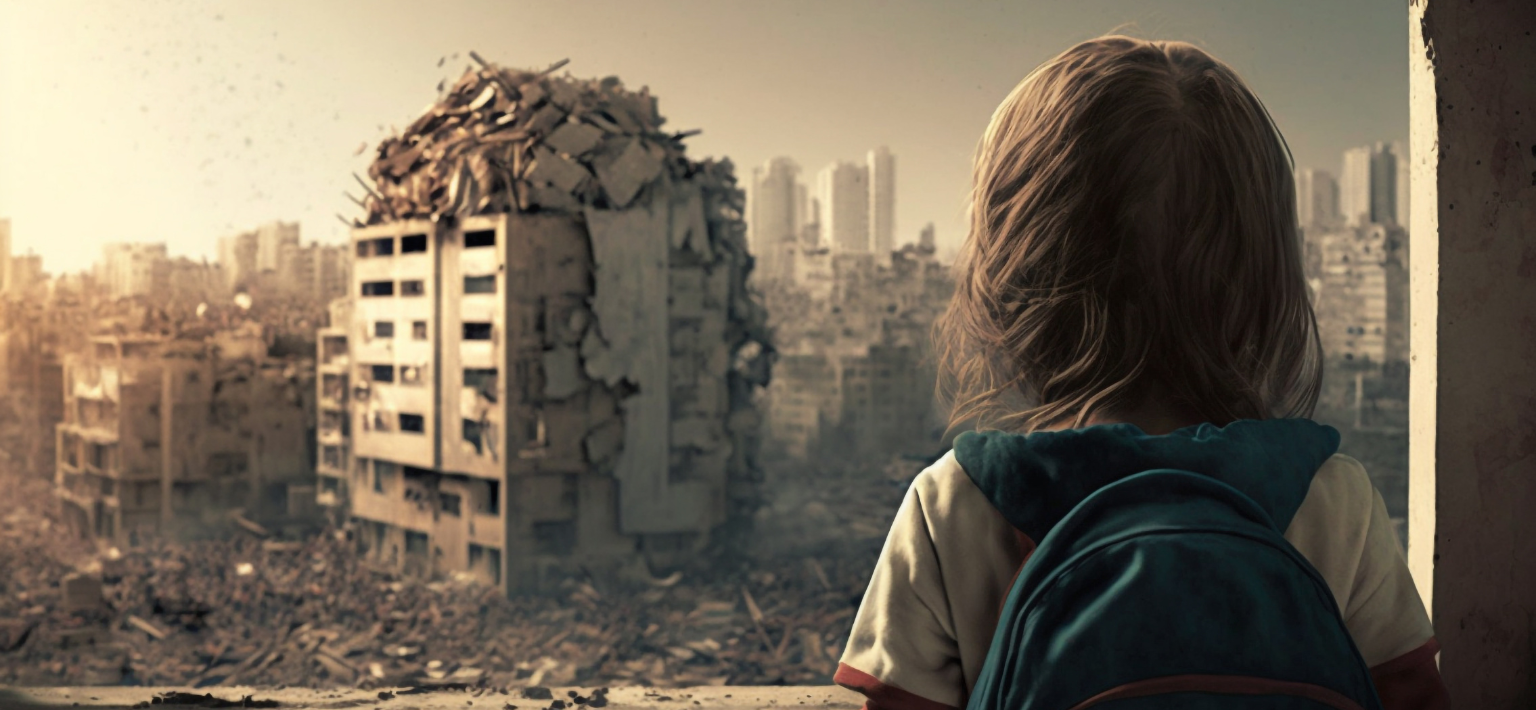
Updated On: April 04, 2024 by Raghda Elsabbagh
Dystopian worlds have long captivated our imagination, providing a stark look at what our future could morph into under the strains of oppressive regimes and societal breakdowns. These fictional landscapes often mirror our deepest fears and offer a canvas for storytelling that warns and educates. But what is equally fascinating is that these poignant settings often have their anchors in the real world, borrowing from actual locations to ground their tales in a relatable reality.
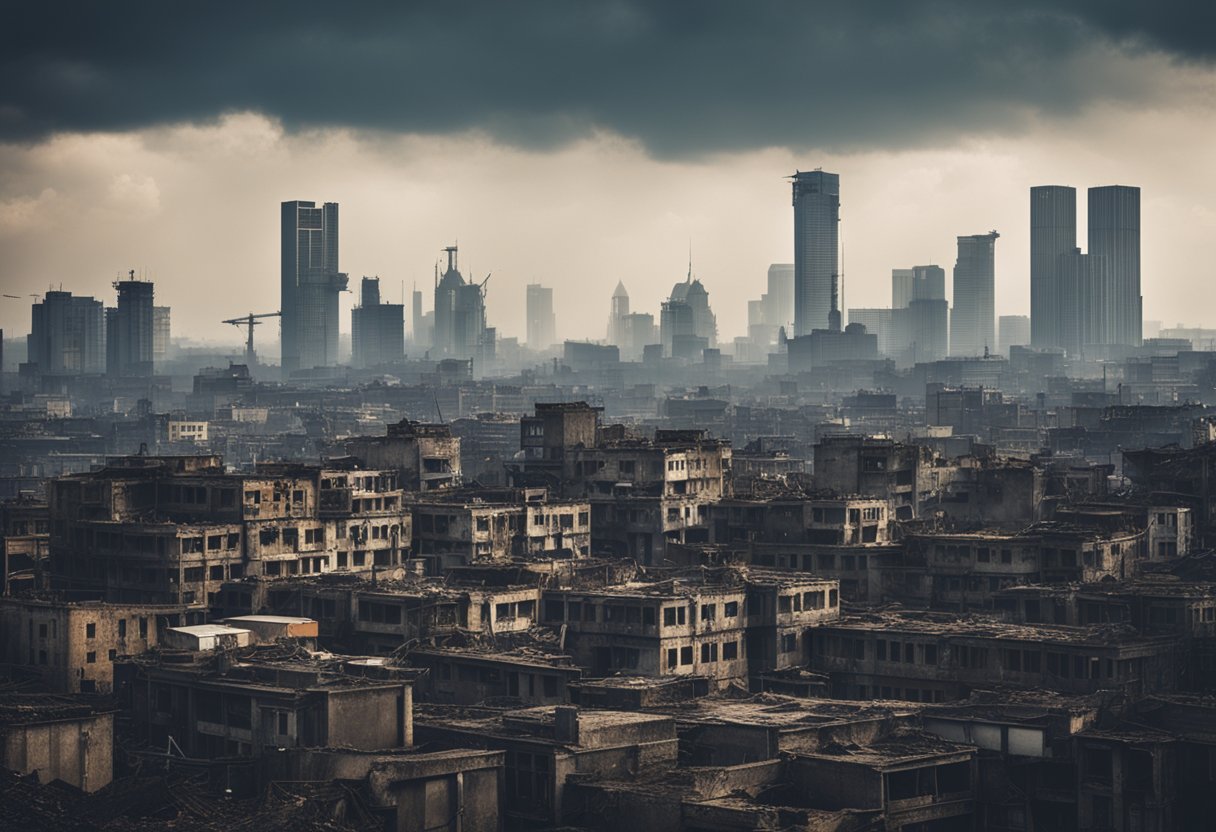
The creative minds behind iconic dystopian literature and films frequently draw inspiration from the streets we walk and the cities we inhabit. Authors and filmmakers bridge the gap between the present and the imagined future by transforming real-world landmarks and landscapes into the backdrops of their cautionary tales. Our world’s architecture, history, and culture become intertwined with fiction, resulting in a hauntingly familiar canvas that questions our assumptions about society and our role within it.
Table of Contents
Exploring Dystopian Themes
Within the canvas of dystopian literature, themes often reflect exaggerated yet conceivable extensions of our own societal, governmental, and technological trajectories.
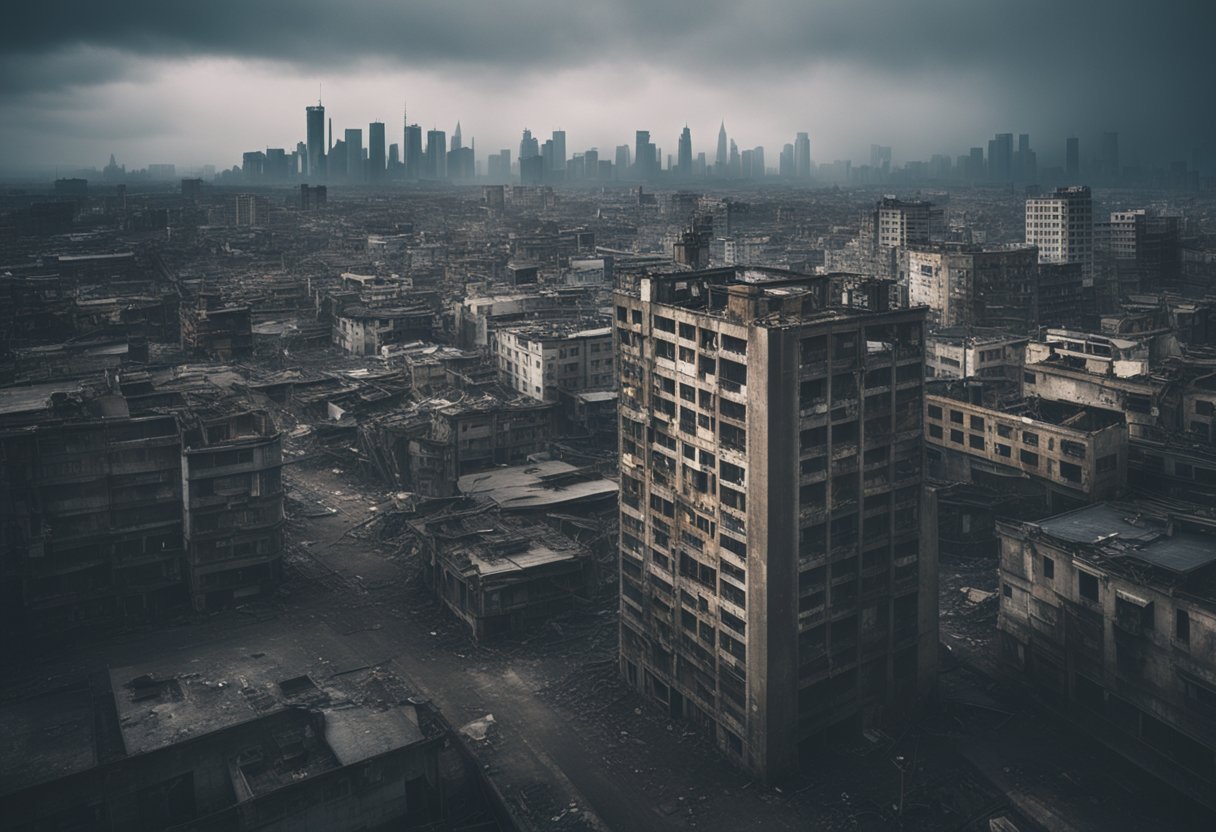
Societal Structures and Government in Dystopia
The Hunger Games presents a vivid portrayal of societal divisions. In this narrative, the opulence of The Capitol starkly contrasts with the poverty of the surrounding districts. This fictional universe mirrors real-world disparities in wealth and power, leading readers to question the moral fabric of their own societies. A common underpinning of dystopian works is the exploration of authoritarian regimes and the systemic oppression within these structures, as exemplified by the government in Nineteen Eighty-Four. Here, perpetual surveillance and historical revisionism serve as tools for maintaining the government’s hegemony.
The Influence of Censorship
Censorship represents a central theme in dystopian fiction, seeking to control not only the populace’s actions but their thoughts as well. Fahrenheit 451 delves into the consequences of censorship and state-manipulated media, where books are banned and ‘firemen’ burn any books found. This extreme interpretation of censorship is a commentary on the vital importance of free thought and speech for the progress of society and the appreciation of a diverse spectrum of ideas.
Pursuit of Utopia
Ironically, within many dystopian worlds, the pursuit of a utopian society, encompassing universal happiness and progress, often catalyses oppressive regimes. The elusive goal of a perfect society comes at the cost of individual freedoms and the emergence of an omnipresent state intent on shaping humanity to fit its flawed vision. In literature, these pursuits often warn of the dangers inherent in chasing an ideal that may, in reality, be unobtainable.
In exploring these dystopian themes, we uncover a mirror, albeit a distorted one, that reflects significant concerns within our society. The potency of these narratives lies in their ability to challenge us to think critically about the direction in which we are headed.
Iconic Dystopian Literature
This section will explore the dystopian genre’s foundational works and current giants, charting the course from early influences to modern masterpieces that mirror our contemporary society.
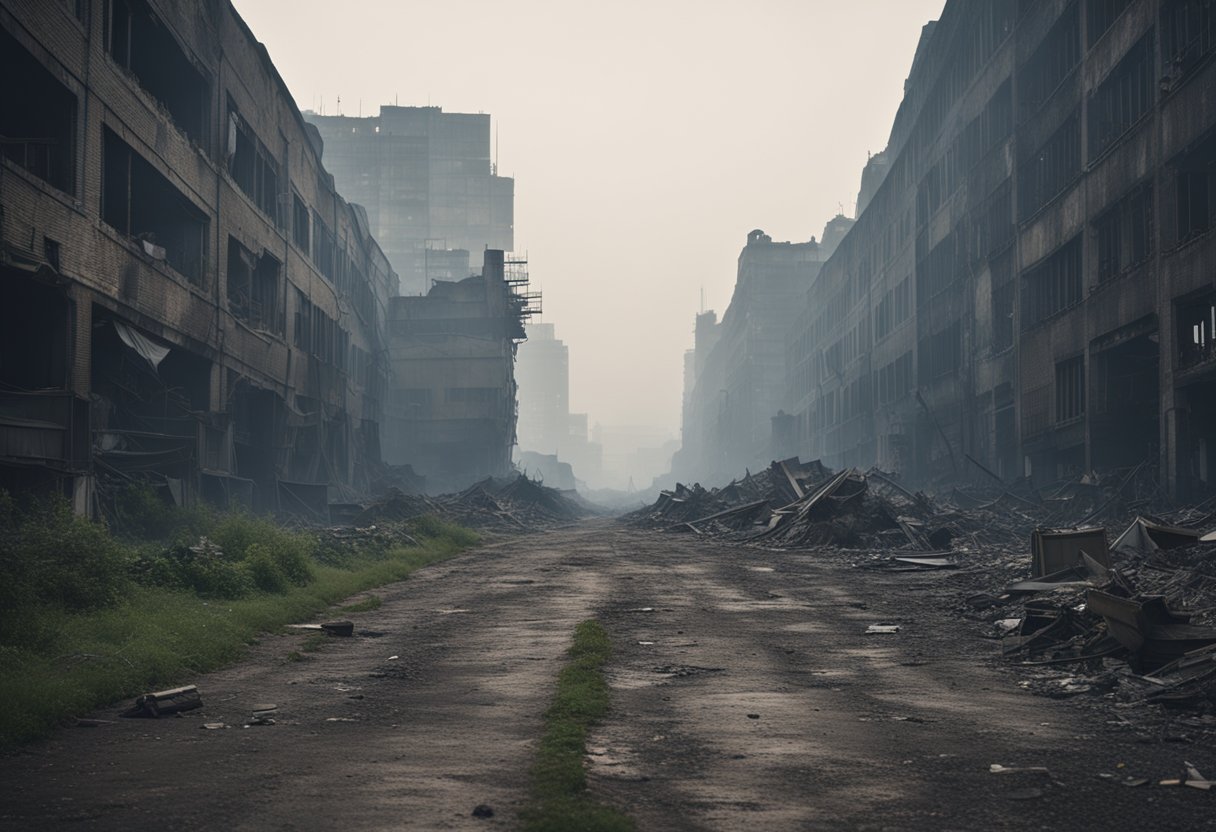
Early Influences on Dystopian Fiction
Our journey begins with the visionary works that laid the groundwork for dystopian literature. Aldous Huxley’s Brave New World is an undeniable cornerstone, unfurling a future where societal control is maintained through pleasure and conditioning rather than punishment. This novel, alongside others from the early 20th century, prompted readers to question the trajectory of our civilisation and the potential consequences of unchecked technological and governmental power.
Contemporary Dystopian Narratives
As we move into the modern era, dystopian narratives reflect societal anxieties, albeit with new themes and concerns. The Hunger Games series, authored by Suzanne Collins, serves as a prime example, capturing the zeitgeist with its portrayal of extreme economic inequality and the spectacle of reality TV. This series, among other contemporary works, has cemented dystopian fiction’s role in our collective cultural consciousness, engaging us in deep reflections on society’s nature, technology use, and the power structures that govern us.
Brave New World and The Hunger Games are but two prominent peaks in the vast landscape of dystopian literature. Authors of such narratives have consistently proven to be adept social commentators, using science fiction to mirror the issues of their time and to offer a prophetic glimpse into potential futures that await us if we remain complacent. Through these tales, writers challenge us to be vigilant guardians of our destiny, ensuring that fiction remains fiction.
From Page to Screen
When iconic dystopian tales transition from the written word to cinematic spectacle, they require meticulous adaptation and imaginative visualisation to bring their worlds to life faithfully.

Adapting Dystopian Worlds
Converting the intricate details of a dystopian universe into a screenplay is a complex process. We see the richness of J.K. Rowling’s Harry Potter series detail Hogwarts’s elaborate halls and magical rooms, which required a deep understanding of the source material to maintain the enchantment on screen. Similarly, George R.R. Martin’s Game of Thronespresented a tapestry of interconnected stories that demanded careful narrative weaving to adapt the sprawling fantasy into a visual format.
Visualising Fictional Destinations
For filmmakers, capturing the essence of a location, such as the sprawling deserts of Tatooine in Star Wars or the lush forests of New Zealand, which doubled as Middle-earth in The Lord of the Rings, requires more than just a set; it needs a visionary approach to transform real-world landscapes into fictional destinations. Crafting Pandora‘s bioluminescent scenery in Avatar involved groundbreaking visual effects. At the same time, the gritty, computerised realm of The Matrix challenged viewers’ perceptions of reality. In Minority Report, futuristic technology and architecture were crucial in creating a believable world set just decades ahead of our time.
To render these distinctive worlds on screen and ensure audiences are fully immersed, the choice of location and technology is as critical as the narrative itself.
Real Locations Behind Fictional Places
Exploring real-world locations that have served as the backdrop for some of our favourite fictional universes offers a unique way to experience both the stories we love and the planet we inhabit. Let’s discover the actual destinations that became the settings for iconic fictional worlds.
New Zealand’s Middle-Earth
New Zealand’s enchanting terrains became synonymous with Middle-Earth, brought to life in J.R.R. Tolkien’s The Lord of the Rings series. The Waikato region’s rolling green hills and pastoral landscapes transformed into The Shire, where Hobbits live in peace and harmony.
Georgia’s Capitol District
In Atlanta, Georgia, the Swan House is instantly recognisable as the opulent abode of President Snow from The Hunger Games. With its striking architecture, the classical mansion doubles as the Capitol District, reflecting the luxurious and authoritarian essence of the ruling power in the novels.
Iceland’s Extraterrestrial Landscapes
With its dramatic vistas, Iceland has often provided the backdrop for otherworldly scenes in science fiction and fantasy narratives. The island’s surreal volcanic landscapes have been portrayed as distant planets and served as a visual cue for the concept of extraterrestrial terrain within our own terrestrial realm.
By visiting these places, we connect with the fictional stories on a deeper level and gain a profound appreciation for the natural and cultural riches our world offers.
Fictional Cities and Their Real-World Counterparts
We often find that fictional cities from our favourite comics hold a mirror up to the very real metropolises they are modelled on. Let’s explore these facsimiles and their origins.
Metropolis and New York City
New York City—the Big Apple, a bustling hub of culture, commerce, and ceaseless energy — serves as the quintessential backdrop for DC Comics’ iconic city of Metropolis. Known as the home of Superman, Metropolis is depicted with towering skyscrapers and a sense of grandeur that reflects New York’s distinct skyline.
Gotham’s Chicago Roots
Moving from the city of tomorrow to the dark, crime-ridden streets of Gotham City, the setting for Batman’s vigilantism closely resembles Chicago, USA. The representation of Gotham’s gloomy and forbidding atmosphere borrows heavily from Chicago’s historical architecture and the gritty noir character of its early 20th-century urban landscape.
Mythical and Magical Destinations
In this section, we’re transporting you to places where the boundaries between our world and fictional universes blur, taking you from the cobblestone streets and spires of magical academies in the UK to the high-tech nation hidden in the heart of Africa.
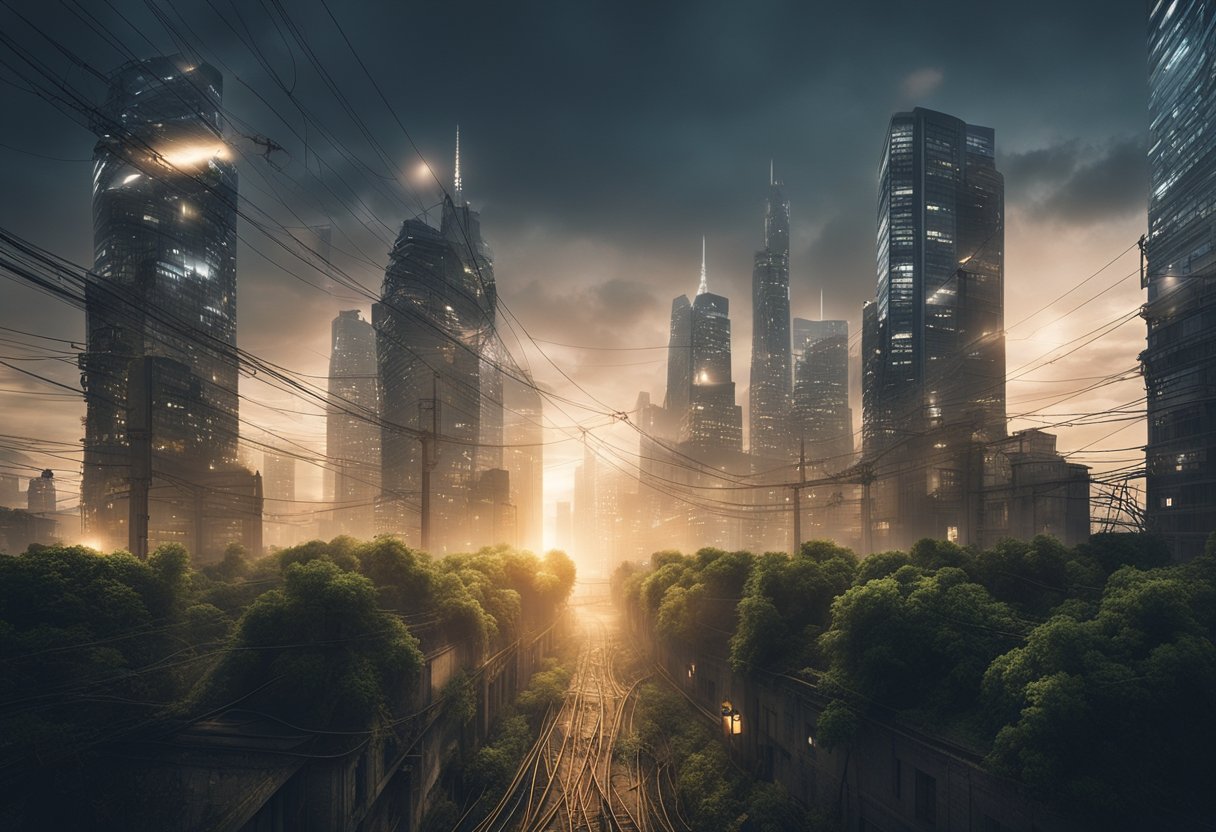
The Wizarding World of the UK
The United Kingdom serves as the backdrop for the celebrated Harry Potter series, which has captivated readers with its intricate tales of magic and bravery. The concept of Hogwarts School of Witchcraft and Wizardry has become synonymous with the quintessential magical academy experience. Fans can explore filming locations peppered throughout the UK, which doubled as parts of the sprawling, enchanting castle and its grounds.
- Oxford University, with its historic towers, directly inspired parts of the Hogwarts setting and was used as a filming location.
- The iconic King’s Cross Station in London represented Platform 9¾, where students of Hogwarts would catch the Hogwarts Express.
These real-world sites foster a connection with the wizarding world, endearing the UK to fans of the series globally.
Marvel’s Imaginary Realms
Shifting from spellbooks to the pages of comics, places like Wakanda from Black Panther reflect an afro futuristic kingdom that seamlessly blends tradition with innovation. Although Wakanda is a fictional nation, the spirit and imagery draw from various cultures across the African continent. The success of Black Panther has sparked interest in African culture and its varied, rich heritage.
- The majesty of Wakanda captures the imagination with its technologically advanced yet traditional society, capturing audiences’ imaginations worldwide.
Moving north of the Earth to the cosmic realms, Asgard, the celestial home of Thor, is often depicted with sweeping vistas and grand palaces in the Marvel Universe. Inspired by Norse mythology, this otherworldly realm fascinates those interested in the legends of old, with Asgard’s representation in Marvel’s films igniting an interest in exploring Norse heritage.
Both of these fictional places encourage us to look deeper into our world’s cultures and the mythologies that shape them. Marvel’s diverse settings advocate for exploring both our rich past and the boundless possibilities of the future.
By venturing to the UK, we can walk in the footsteps of witches and wizards, while an engagement with Marvel’s creations stirs up curiosity about the extensive legends and folklore that have influenced these modern tales.
Science Fiction Meets Real Ingenuity
Within the fabric of science fiction, there nestles a remarkable synthesis with real-world ingenuity, where fictional dystopian settings reflect our architectural marvels and cosmic curiosities inform the backdrops of vast space operas.
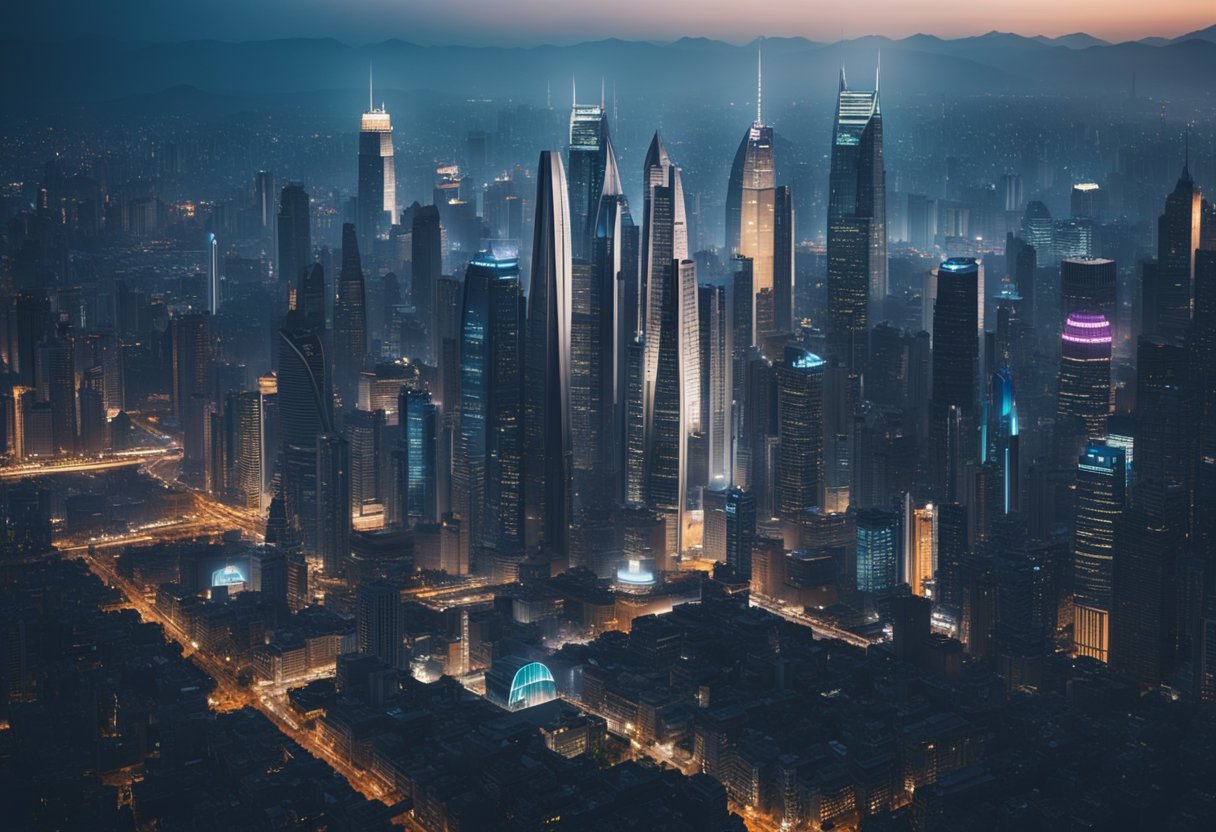
Cyberpunk Cities and Architecture
In envisioning cyberpunk cityscapes, Blade Runner drew inspiration from sprawling metropolises and intricately fused them with a gritty, neon-drenched dystopian aesthetic. The Bradbury Building in Los Angeles, with its labyrinthine interiors and timeless facade, embodies the very essence of cyberpunk architecture, projecting a world where high-tech meets decrepitude.
Space Operas and Real Astronomy
Star Wars, the quintessential space opera, integrates robust astronomy principles—the foundation upon which its galaxy, teeming with diverse planets and star systems, is built. Such narratives not only thrum with the adventures of spacefaring heroes but are also grounded in the cosmic wonders we see in our own telescopes, connecting storytelling with stellar phenomena.
Cultural Reflections in Dystopian Settings
Dystopian fiction often mirrors our world’s cultural and social fabric, reflecting the anxieties and issues prevalent in different societies.
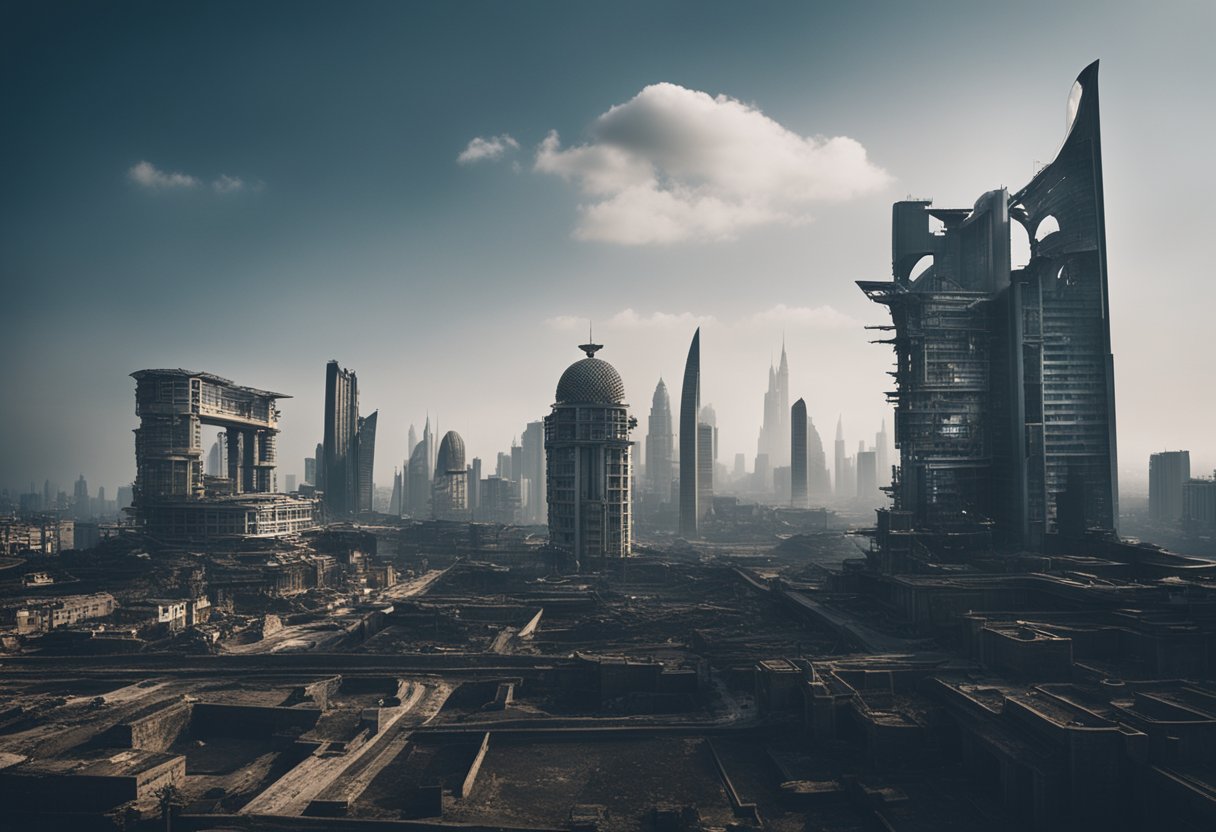
Dystopia from a Global Perspective
In our observations, dystopias incorporate elements from various cultures, each depicting unique challenges and fears. For instance, China’s rapid technological growth and surveillance state have inspired stories about the loss of privacy and autonomy. Similarly, Japan’s history with atomic bombs and natural disasters has led to post-apocalyptic and tech-dystopian narratives. Such settings not only act as a backdrop for the story but also provoke thought on the consequences of modern advancements and disasters.
France and Brazil have provided dystopian storytellers with rich historical context—the former with its revolutionary past and the latter with its experiences with authoritarian regimes. Frequently, these nations illustrate a dystopia where inequality and historical scars warn of what might recur if society remains unvigilant.
Social Commentary Through Fictional Locations
Our approach to analysing dystopian fiction reveals that it’s a vehicle for social commentary. Fictional locations mirror our existing cities and countries, projecting our contemporary societal issues into exaggerated yet recognisable futures. Australia’s vast deserts have been depicted as wastelands, a sobering reminder of the potential effects of climate change and environmental neglect.
Cultural reflection in these settings critiques the current societal norms and political environments. Every dystopian narrative we’ve come across is laden with commentary on issues ranging from class disparity and loss of cultural identity to rampant consumerism and erosion of civil liberties.
Through collective reading and analysis, it’s clear that such reflections are instrumental in challenging the reader’s perspectives, compelling us to confront the direction our world might be heading.
Lesser-Known Dystopian Inspirations
In exploring lesser-known dystopian inspirations, we’re diving into the real-world locales that sparked the creation of iconic literary universes.
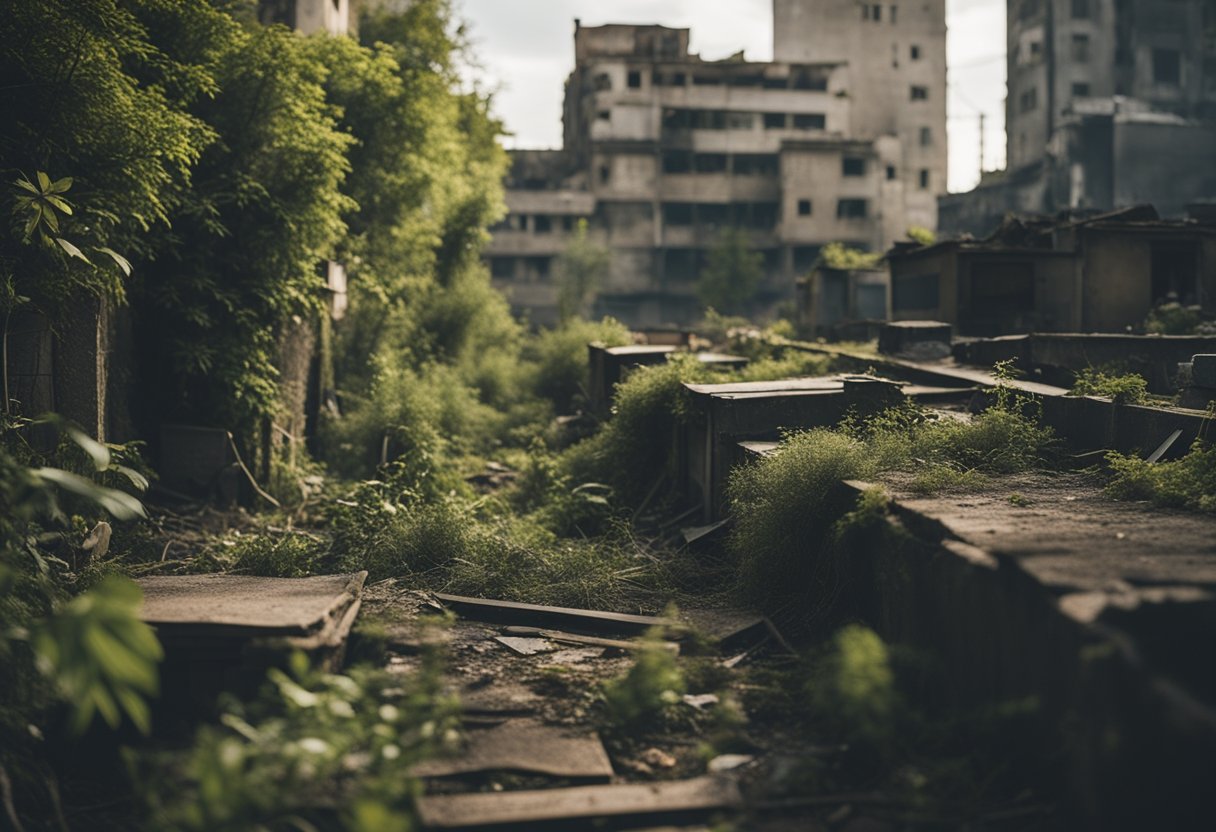
Literary Nooks and Hidden Places
Nestled in the heart of Bath, England, the sweeping Georgian architecture might seem the epitome of elegance. However, these very streets paint the backdrop for the compulsory regulation and conformity often depicted in dystopian narratives. Similarly, France and Spain’s intricate alleyways and grandiosity have lent themselves to tales of societies fractured by discord and despotism, revealing that within beauty often lies the potential for a far more sinister reality.
Natural Wonders Behind the Fantasy
It’s not only man-made landscapes that inspire the foreboding settings of dystopian worlds. Belize’s vast, otherworldly terrain, with its lush rainforests and ancient Mayan ruins, echoes the untamed jungles and lost civilisations that often symbolise the remnants of a world beyond our own. Moreover, the storied peaks of Peru remind us of Rivendell, a haven of beauty in a fractured world, symbolising both isolation and escapism within the annals of dystopian fiction.
Unveiling the Creative Process
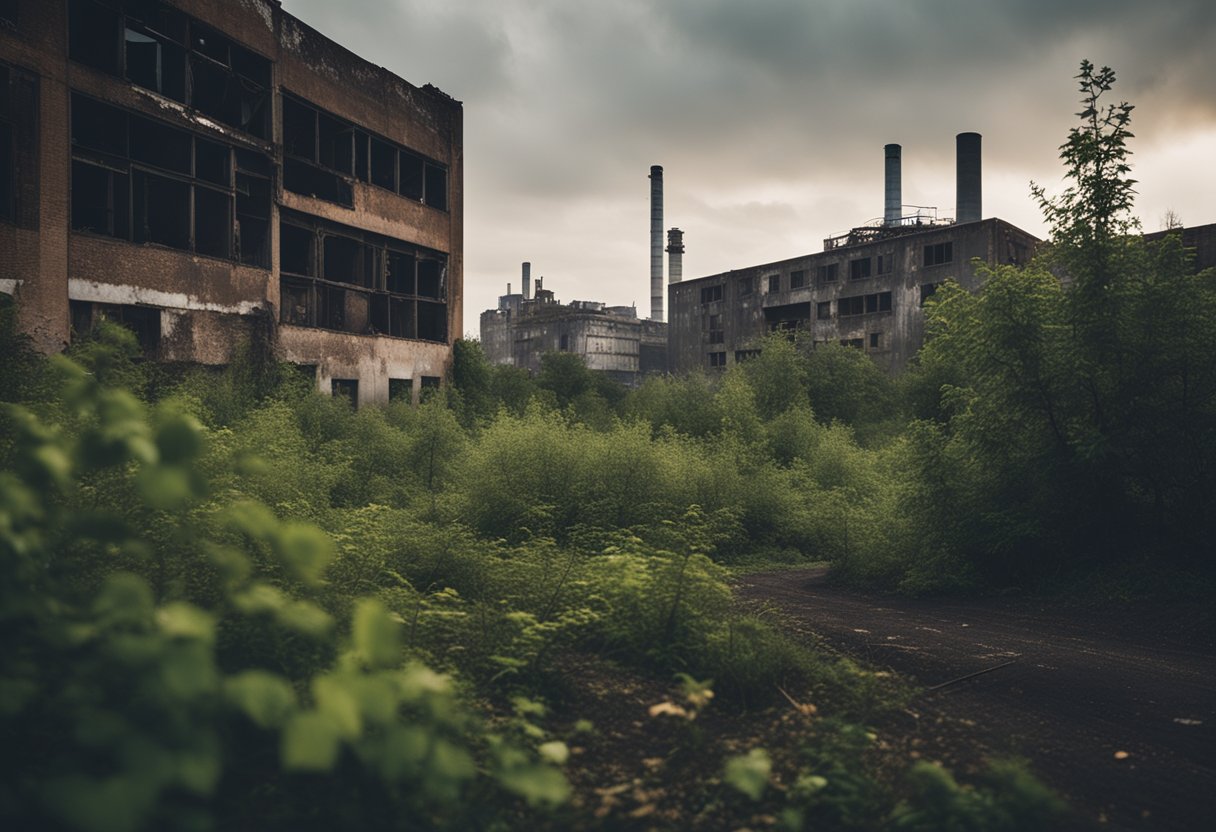
In exploring the dystopian realms, authors embark on a profound journey to craft worlds that reflect our deepest fears and hopes. The world-building process draws upon the real to forge the unreal, a testament to creativity’s power.
The Author’s Journey
Writers often begin their creative process with inspiration from the world around them. Let’s take J.R.R. Tolkien, for example; his experiences during World War I and his scholarly interest in ancient languages and mythologies fuelled the intricate world of Middle-earth. The environment, history, and personal encounters of authors provide fertile ground upon which the seeds of their imagined worlds can germinate and grow.
Building Worlds from the Ground Up
In world-building, the devil is in the details. Writers must consider every aspect of the societies they create, from governance and social structures to geography and economics. They meticulously draft maps, histories, and even languages to give their worlds authenticity. This act of creation is not done in broad strokes but with the precision of a master painter adding layer upon layer to their canvas so their audience can fully immerse themselves in the experience.
Challenges in Depicting Dystopian Worlds
In creating dystopian stories, we face the intricate task of weaving together places that resonate with readers while addressing profound ethical questions.
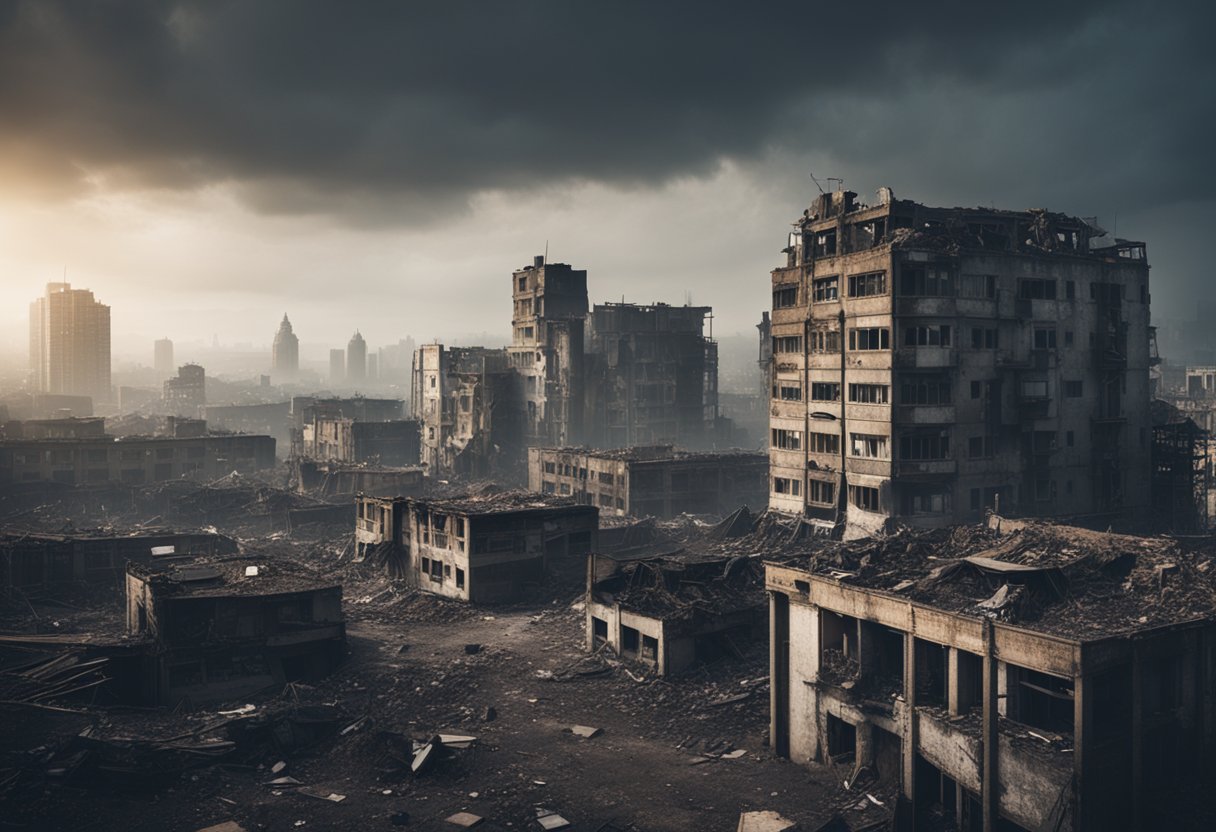
Balancing Reality and Fiction
To craft believable dystopian worlds, we must balance the existing world and the fabricated elements that make a location distinctly fictional. We draw from real destinations, yet we must adapt and extend them to fit the narrative needs. This involves a careful juxtaposition that maintains a connection to reality not to alienate the audience but also to showcase the creativity that underscores fictional destinations.
Ethical Considerations in Dystopian Stories
It’s crucial to navigate ethical considerations with sensitivity when dealing with dystopian themes. We aim to reflect societal concerns without normalising or trivialising the struggles depicted. This involves responsible storytelling and entails presenting narratives that prompt reflection and discussion about real-world issues, prompting a careful consideration of the impact these stories may have on readers.
Frequently Asked Questions
We’ve compiled a list of some of the most pressing questions about the real-world places that have shaped the settings of some of literature’s most iconic dystopian narratives.
Which real-world locations have influenced classic dystopian fiction?
Many classic dystopian works draw inspiration from actual locations. The Bradbury Building in Los Angeles, with its iconic ironwork and atria, provided the setting for the seminal film Blade Runner. Sydney’s Royal Botanic Gardens also set a backdrop for a dystopian future in The Matrix.
What are considered the most dystopian cities in the world?
While “most dystopian” is a subjective term, cities like Pripyat in Ukraine, abandoned after the Chernobyl disaster, or the industrial landscapes of Norilsk, Russia, are often cited as having a dystopian feel. These places exhibit characteristics typically associated with fictional dystopias, such as desolation and decay.
In which ways does our present society resemble a dystopia?
Current societal concerns such as mass surveillance, the erosion of privacy, income inequality, and environmental degradation are themes commonly explored in dystopian fiction that resonate with today’s real-world issues. For example, the rise of extensive data collection mirrors the surveillance states depicted in dystopian narratives.
Is dystopian literature categorised as science fiction or fantasy?
Dystopian literature is generally categorised as a subgenre of science fiction. Unlike fantasy, which often involves entirely fictional worlds, dystopian stories usually occur in a future or alternate version of our world, incorporating speculative technological advances or societal shifts.
What elements characterise a dystopian thriller?
A dystopian thriller often features a totalitarian government, loss of individual freedoms, constant surveillance, and a backdrop of collapse or profound societal control. They incorporate heightened tension and suspense, with protagonists usually fighting against an oppressive system.
How have perceived dystopian aspects of society been reflected in literature?
Literature reflects societal concerns through dystopian narratives by exaggerating current trends to critique the present and forewarning of an undesirable future. Works like George Orwell’s 1984 and Aldous Huxley’s Brave New World highlight issues such as authoritarian rule and dehumanisation through technology, respectively.






